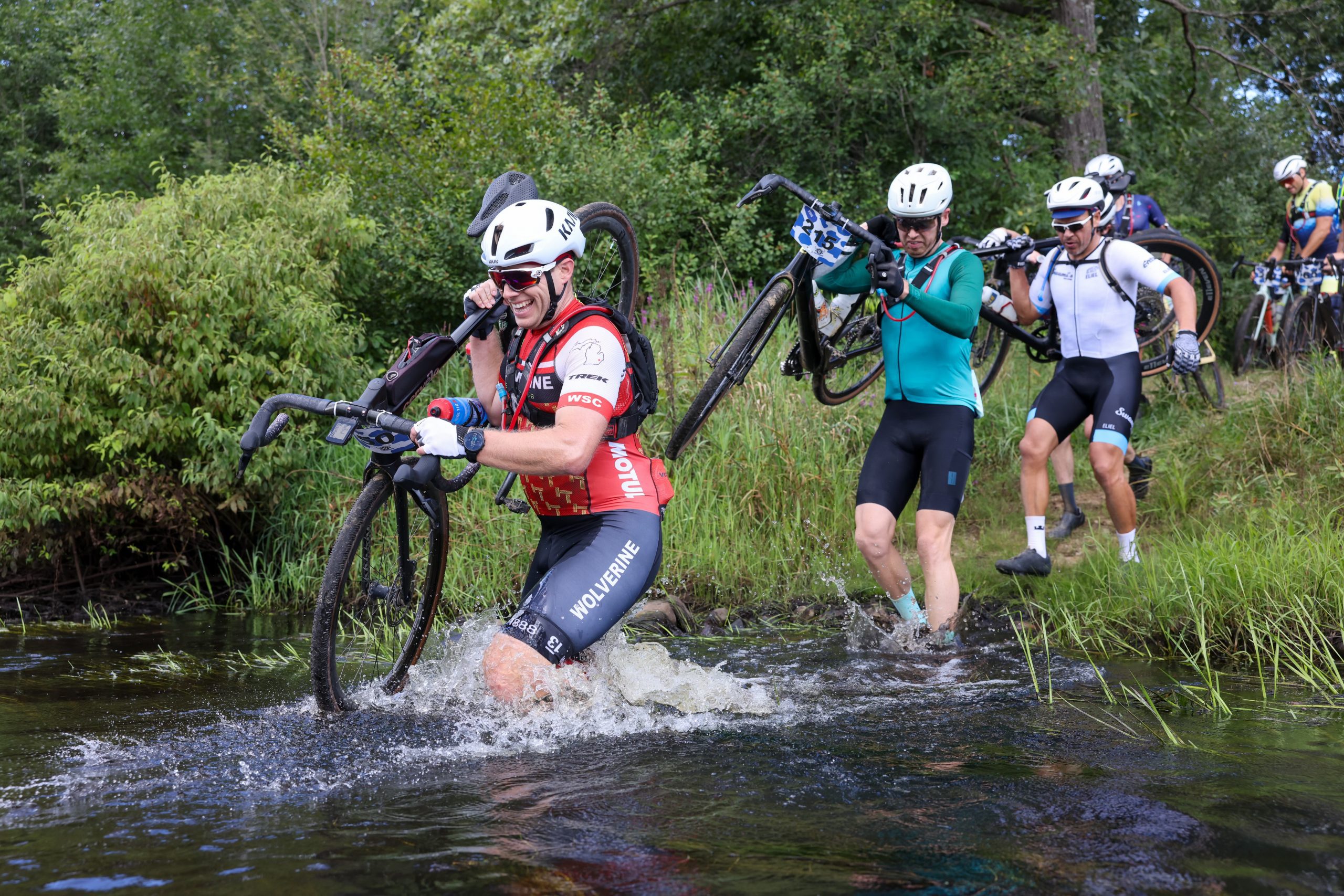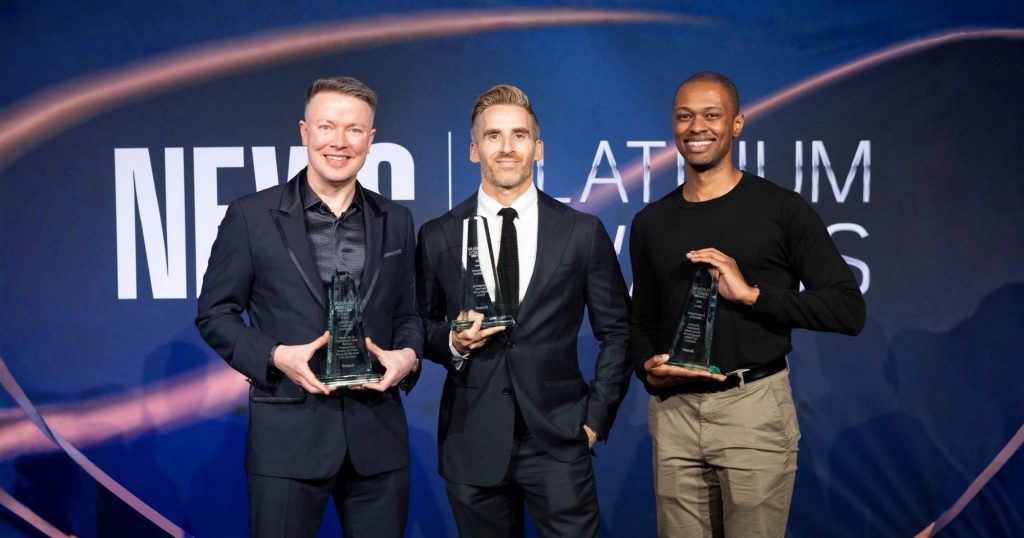What led you to a career in social media?
I’ve always been a good short-form writer, so the five-paragraph essay in school was my sweet spot. The minute that I needed to go longer, things got a little sketchy.
I started my career in sales, making cold calls every week and following them up with emails. Because I was writing a lot of emails, I quickly became good at it. So much so that the director of marketing asked if I wanted to write social media and blog posts instead. I immediately answered, “Yes, I would love to do that.” From then on, I started posting more on social media.
This was around 2010, when more social platforms were being released. There was a big need for written content for platforms like Twitter, LinkedIn and Facebook, and I enjoyed writing, so that’s how I got into social media.
Why is social media a valuable part of PR?
Social media can bring PR, and the messaging that it puts in front of an audience, to life in a way that more and more people can connect with — whether we like it or not.
People are consuming content differently than they were five years ago. They aren’t gravitating towards long-form online content, whether it’s on video or written.
Social media is a great way to discover a lot of topics and news without committing to reading something for five minutes; we can get our daily digest in a minute or two. I think about how Snapchat used to have a feature that would break down daily news in a minute.
It’s the same on the podcast front. For example, NPR’s “Up First” is a daily podcast that covers three to four of the day’s most important topics. After 15 minutes, you have your daily news fix.

So, from a PR standpoint, social media lets people get the sound bite or the general idea quickly.
When looking at a website full of news, we have to do a lot of self-selection, digesting and consuming to get the picture of what’s going on that day. It’s important to remember that people don’t want to be experts; they just want to know the story and impact and then move on to the next one. There are so many stories now that you almost need someone to filter it, and that’s what social media algorithms can do.
Another reason social media is valuable to PR is visibility.
It used to be critical for PR teams to only get a placement in a newspaper or on a website, but now we need to ensure that we’re also leveraging our distribution channels.
If we want more eyeballs on our stories, we need social media. It’s an excellent way to distribute that piece of content, whether you’re sharing a LinkedIn post, posting in a group or launching an ad.
We recently launched our chatbot Push*E, and social media – along with news articles – was a huge part of amplifying our announcement to the world. Social media has built-in distribution that the web and newspapers don’t.
There’s also a level of engagement that those mediums don’t have. And social media platforms know that.
For example, Facebook keeps users on the platform longer by sorting comments into three categories: most relevant, most recent and all. However, it only shows users three comments when they click on comments.
If you want to see everything, you have to keep clicking, increasing the time you’re spending on the platform and allowing Facebook to serve you more ads. So, it benefits all involved to play into the engagement aspect of social media.
What are brands and execs still getting wrong about social media?
Posting. We always get questions like, “Can we throw this on social media?” Or “How many times a week should I post on social media?”
Posting on social media is the least common denominator.
Social media often gets treated like an email blast, which means there isn’t much thought put into the post. There are way too many people posting and too much content out there. Folks want to go where the action is: in groups and comment sections.
Clients shouldn’t worry about having a post every day of the year. They need to worry about outbound social media, like social listening. Or finding a trending thread and putting a thoughtful comment on it, with a link to their solution for the problem. There’s a big difference between a thoughtful or clever insight and just posting for the sake of posting.
The other thing is people love their websites. Too often, we see a rinse and repeat of a social post with a link to a website. That’s not a beneficial way to post and use social media.
Social media users want to stay on those platforms. They don’t necessarily want to chase links and go read more somewhere else. Give them the information. If it’s important, they’ll value it. They’ll thank you, and then you can build a relationship and eventually get them to your website.
Also, not every post needs to have a photo or a link to your website or another website. The general rule is the longer you keep your audience on the platform, the better. If you create social-first content and keep users on social platforms, you will get better distribution.
So, spill the beans, tell the reader what they need to know and stop worrying about getting a link back to something else.
What gets you excited about social media?
What’s exciting is that social media is now seen as a competitor to streaming services like Netflix and Hulu. I get excited thinking about companies, executives and leaders who understand that and know they need to develop their stories for these distribution channels and invest in what will work.
Think about static or written content. Some people are using it or reading it, but there is a whole new way to bring it to life with social media.

Why are you only writing a blog post about your newest technology? You should also create a video explaining it. It’s never been easier to do, and that is what people want to see.
With social media, we can be unique and present topics in shareable and interactive ways. We can even do a LinkedIn live or an Ask Me Anything about the topic. Regardless of the initial turnout, that piece of content would be memorialized, thanks to social media.
What else gets me excited about social media is that it’s another way to channel surf, like we did back in the day. When we channel-surfed, we never knew what we would find to watch on TV. Social media platforms are adopting this method because they know it works.
When you look at Instagram Reels, YouTube Shorts and TikTok, they’ve all developed functionality reminiscent of channel surfing because users like the unknown, and that’s a psychological benefit. Most TikTok users like their “For You Page” for this reason — so they can “channel surf” or scroll through content the algorithm has pushed to them.
How can brands push the limits of social media?
On Instagram, I follow theprojectkosmos, a filmmaker who convinced a few brands to sponsor him for a trip around the world. On that trip, he’s trying to break a world record for the fastest time to travel to every country. But while he’s doing it, he’s asking one person in each country, “What is happiness to you?” The trip is pretty unique in the sense that some brands “get it” — i.e., the opportunity of the trip — more than others.
The brands that “get it” talk about something people will find interesting and want to be affiliated with. For example, since theprojectkosmos travels to multiple countries with different climates, he has to both pack light and have the right gear for the circumstance. So he often shouts out the gear from his sponsors, like outdoor company Moosejaw, in stories and posts. Because of it, people asked, “What’s Moosejaw?” — all because of a shout out and its association with this trip.
This is one example of how brands can push the limits of social media. It’s not about overtly pushing out the brand message; it’s about creating content that your target audience can identify with or gives them something to aspire to. That’s how brands will attract attention.
This means brands need to stop saying, “We are an XYZ company.” Social media is for broad appeal. Brands should do things that have broad appeal, and they will continue to push the limits.
What important trends are you seeing in social media today?
More platforms are trying to ensure content comes from people rather than companies. There’s been a massive disconnect in participation on social media platforms because people want to interact with folks they know or feel like they know.
People aren’t going to download a white paper from someone from a company they’ve never heard of. However, if there’s a person with a similar title to them and is speaking their language, the user will be more likely to listen to them. So, platforms are allowing profiles like that to get more attention.
Another trend I’m seeing has to do with influencers and their role. For the most part, massive influencers are losing their influence. Companies aren’t throwing thousands of dollars at influencers for endorsements anymore. Big budgets on influencers aren’t as much of a thing.
Something else I’m seeing is the need to create platforms that facilitate conversations. For instance, although Discord is a lower production value platform, it allows users to have something interesting to say and people to discover it, which adds to its appeal. Having those engagements is why a lot of people started using social media and why people will stay on it.
It’s the same with Facebook groups. People love to comment in community groups because they allow them to ask questions like, “Does anyone know a good plumber?” They could Google it themselves, but they want to know from the people in their area. They don’t want to know what Google thinks because SEO heavily influences it. They want that social proof for the problem that they have. Any platform that can help people feel good about the decisions they’re making and start conversations is going to be valuable.
Are there any recent social media campaigns that have stood out to you?
I like what my colleagues Skyler Levy and Alyssa Damato have done with Bospar’s social media channels. It’s hard to make good content consistently – but they’ve mastered the craft. If I were a potential client, I would look at our social channels and think, “If that’s what they’re doing for their channels, maybe they could help us in the same way.”
An external account I pay a lot of attention to is poorboy coffee. The founder shows how he is bootstrapping a coffee business. It’s made a lot of people buy the coffee – not because it’s the best coffee available, but because they really like the entrepreneur’s story. His engagement numbers are through the roof!
It’s fascinating to see what he’s doing from brand-building, sourcing and testing standpoints. It’s a unique approach. We can learn a lot from that.
If I were a brand, I would talk more about my process and how things are built rather than what’s already built or what the solution is.
Finally, know you’re an avid cyclist. What made you get into cycling, and what do you enjoy about it?
I got into cycling after doing Ironman triathlons. I was never a great swimmer, and I like running, but I quickly fell in love with the biking aspect of triathlons. This got me into buying more bikes: I have a road bike, a gravel bike and a mountain bike.
I love riding and being outside. I like that it’s a singular use of my attention. You can’t do anything else when you’re on a bike; your hands have to be on the handlebar, and you have to pay attention to your surroundings. So, it’s how I can be very present, center myself and do a lot of thinking.
I live in Ann Arbor, so I can easily bike ride around town. I don’t even get in my car most days because I can bike everywhere. I also have a little trailer I can attach to my bike that I put groceries or my dog Oats in, and we roam around the city.
I bike even when I travel. I recently got back from Colorado, where I did a big gravel race, and I saw more of the countryside there in seven hours than I would if I was driving. I enjoy experiencing the world through riding.




